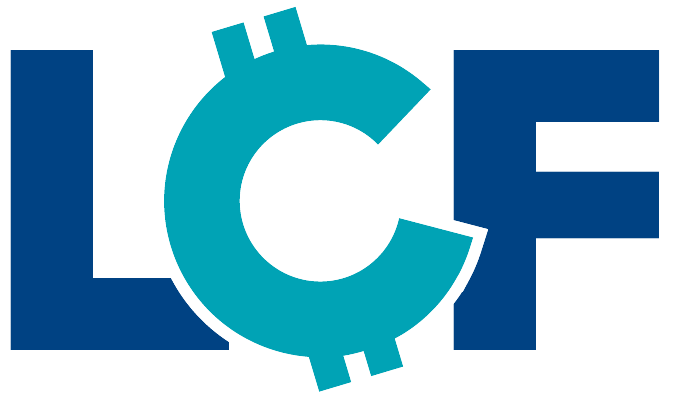Apply Now For Business Funding
Medical practice loans and funding programs for doctors are financing for medical practitioners. Funding is made available for office facilities, equipment, staffing and general purposes.
Lenders love working with medical practices as borrowers, as the owner of a medical office is highly unlikely to default. After all, the healthcare industry is incredibly lucrative for business owners.
Whether you’re starting up a new practice, expanding an existing one, or simply considering whether you’ve got enough cash on hand, there are numerous reasons you might consider financing a medical business.
Uses for Medical Practice Financing
All companies have overhead, but small business owners in the medical field have an extraordinary amount of expenses needed to keep the lights on.
Medical and diagnostic equipment. The physical equipment that healthcare professionals need to do their jobs is expensive. In addition to medical equipment, machines like x-rays and other imaging devices cost thousands.
Hiring your team. Your medical practice may require multiple professionals to function properly. On top of that, there’s the need for support staff.
Record-keeping. Gone are the days of creating and storing records by hand. A fully digital record-keeping system requires expensive software and hardware.
Real estate. You need a space for your office, and commercial real estate can be extremely expensive.
Licensing. There are many licenses and registrations you’ll need to legally perform medical procedures. Some of these can be highly expensive.
Debt payments. If you’ve taken out loans in the past (including your student loans), some forms of financing will allow you to make payments on those debts.
Marketing. You’re going to need to get the word out about your practice. Using business financing to market your company is an effective use of those dollars.
Acquiring or opening a new business. If a competitor relocates, retires, or for any reason puts its business up for sale, you might consider opening up a second location or buying an existing practice.
Types of Business Financing for Physicians and Medical Practices
There are as many funding options for a medical office as there are ways to use them. Here are three key ways to fund your office.
Term Loans
At their most basic, term loans are simple: they’re offered by every financial institution you can think of, from online lenders to traditional banks.
Term loans are available as both long- and short-term loans, with short-term loans requiring repayment within 18 months in most cases, and long-term loans lasting as long as 30 years (particularly if used to buy real estate).
There’s lots of variation within term loans: you might need to offer collateral, a variable interest rate, make a personal guarantee, or some combination of those.
SBA Loans
In many cases, the best loans on the market are those guaranteed by the United States Small Business Administration.
The SBA itself doesn’t actually lend money. Instead, they offer financial protection to third-party lenders, protecting them from losing money. If a lender defaults on an SBA Loan, the SBA guarantees up to 85% of that loan to the lender.
With such a reduced risk of losing money, lenders are able to offer loan programs with highly favorable loan terms. There are three main types of SBA loans:
-
SBA 7(a) Loans. The most popular form of SBA Loan, these are term loans of up to $5 million. SBA loans can be used for a variety of purposes, including working capital, equipment purchases, and more.
-
SBA 504 Loans. This program is intended to be used on real estate or other long-term infrastructure and utility upgrades that create jobs. They can also be up to $5 million, and repayment terms can last for decades.
-
SBA Microloans. As the name implies, microloans are smaller than other forms of SBA loans. They’re offered through community nonprofits and must be smaller than $50,000.
Equipment Loans
Whether you’re an optometrist or a dentist or anything in between, healthcare spaces are heavily equipment-based. And that equipment is expensive. An MRI machine, for example, can cost over $200,000 on its own.
That’s where equipment loans come in. An equipment loan can only be used for equipment, whether that’s a computer for your front desk or imaging equipment. The new equipment is then used as collateral, making it far less likely that the lender will lose money on the loan.
Business Lines of Credit
Even in a lucrative industry like medicine, unexpected expenses still pop up from time to time. For that reason, you may want to consider a business line of credit. While traditional loans are deposited into your company’s bank account as a lump sum, lines of credit work in the opposite way. You’ll receive a credit limit and have the option to draw on that line of credit as much as you need.
You won’t have to start making payments on the line of credit immediately. You’ll make payments (and pay interest) only the money you spend under the credit limit. You can take out a business line of credit today, leave it untouched for two months, and then withdraw some money to pay an employee. You’ll then only make payments on what you borrowed.
That ready-to-use nature is what makes a business line of credit such an appealing option. And just like a business credit card, if you pay your line of credit back down, you’ll be able to spend back up to that limit.
Here are a few things to keep in mind about a business line of credit:
-
They can be used for many purposes. Medical equipment is notoriously expensive and requires maintenance. If a piece of equipment is down, you won’t be able to generate any income. Equipment purchases are seamless with a line of credit. Or maybe one month had slow income, but high expenses. In a situation like that, a line of credit effectively functions as a working capital loan, holding you over until the following month. Some forms of lending, like equipment financing, require a particular reason for funding. If you take out an equipment loan to buy an MRI, you can’t use those funds to make a loan payment. Not so with lines of credit.
-
Lines of credit are more expensive than some forms of financing, like SBA loans. But having a line of credit available is all about speed. An SBA loan can take weeks or more to apply, get a decision, and receive your funding. If you seek out a line of credit early, that cash is available when it’s needed.
-
Many lines of credit will require some form of collateral. For a medical office, that collateral might take the form of your equipment, real estate, or office supplies. If risking assets isn’t something you’re comfortable with, you may want to consider a different avenue for funding.
Alternative Financing: MCAs and Invoice Factoring
Merchant Cash Advances
For medical practitioners processing a high volume of credit and debit card transactions, merchant cash advances (or MCAs) can help cover costs if they need money in the short term.
MCAs are not loans. Instead, MCAs are a type of financing powered by a purchase transaction. An MCA provider will pay to buy a percentage of your office’s future debit and credit card transactions. Since this is a purchase and not a loan, many of the laws and regulations governing the process of receiving and paying for a more traditional bank loan do not apply.
MCAs are paid for by the providers taking a certain percentage of your daily sales, typically around 10%. If you process $5,000 in payments on a particular day, you’ll set $500 aside for the cash advance company. If that number pops up to $12,000, you’ll pay $1,200, and if you only process a thousand dollars in transactions, you’ll only need to pay $100. That flexible payment arrangement can be healthy if you have busy and slow periods.
MCA providers charge a factor rate instead of normal interest rates to make money on the cash advances. Multiplying a factor rate and the size of the advance shows the total repayment amount.
If you receive an MCA for $30,000 at a factor rate of 1.25, you’ll repay $37,500 by deducting 10% of daily sales. Factor rates are typically between 1 and 2.
-
Credit histories aren’t a huge factor with MCAs. Traditional lenders will have minimum credit scores and other qualifying criteria. Not so with MCAs. In fact, some MCA providers don’t ask to see your credit report at all. That’s because the decision to offer an MCA comes down to the quantity and size of the credit card transactions you process. If you’re a startup or have fallen on difficult financial times, your poor credit probably won’t hold you back in an MCA.
-
MCAs move quickly. Often, you can receive the funding the very same day you apply for your MCA. That’s because there’s not an in-depth credit investigation or arduous loan application that can come with a traditional term loan. Instead, the application process is very quick and to the point: if you can show that your business has a proven track record of recording lots of credit and debit card transactions, you can quickly move to receive funding.
-
MCAs can be one of the more expensive financing options. The effective APR of an MCA can reach the triple digits since you’re paying a fixed amount in a short span of time. In fact, the faster you pay back your merchant cash advance, the higher that APR gets. Some MCAs end up with APRs in the triple digits.
-
The funds can be used for nearly anything. Because MCAs are transactions and not traditional small business loans, once the money is in your account you can use it for a plethora of business needs, from wages to buying new equipment.
Invoice Factoring (Medical Factoring)
Medical practices often have thousands and thousands of dollars in outstanding patient bills. When that happens, medical professionals can use medical factoring to bolster cash flow. Invoice factoring is a one-time transaction, not a loan. The company receiving the money sells its outstanding invoices to the factoring provider. They’ll receive a lump sum smaller than the total of the invoices, while the factoring company takes over collecting payments.
Let’s say for example that your medical practice has about $80,000 in accounts receivable at any time over the course of a month. If you used invoice factoring, a company might purchase those invoices at a 4% discount, or $76,800. They then collect the full $80,000, earning them $3,200.
Here are a few more things to keep in mind when it comes to invoice factoring:
-
Since invoice factoring is a one-time lump sum, there are no monthly payments involved. You’re giving up a significant portion of your company’s income to save time on financing, but you also won’t need to make payments for years on a purchase you make today.
-
When your medical practice is first starting up, you will likely have poor credit due to the fact that the length of a business’s credit history is a large factor in its credit score. However, that’s not a problem with invoice factoring. Since invoice factoring is a transaction based on the size of your accounts receivable, that number is far more important than your credit score. If you’ve got bad credit, invoice factoring can be a helpful short-term solution.
-
Because invoice factoring is based on invoices, and not your company’s credit history, factoring companies can offer you funding very quickly. Many factoring companies can offer you funding the very day you apply.
-
There are certain risks that come with invoice factoring. First, many factoring providers charge hefty fees if your customers don’t make their payments in full. In addition, while most factoring companies are staffed by professional, kind employees, you are risking your customers having a less-than-perfect interaction with a vendor that isn’t your company. These two issues mean you’re giving financial power to parties outside your company, which is risky.
The LCF Group is Here to Help
The LCF Group is a boutique marketplace business financing firm with over 11 years of experience. Our financial experts use their small business ownership experience to provide the funding solutions you need without the confusing terms and technical jargon you might see from other lenders.
Business owners have all sorts of loan options available in today’s lending environment. Finding a lender that’s willing to find the right financing with the right interest rates and repayment terms is key to ensuring that your restaurant can function as intended. The best medical practice loan for one business isn’t going to be the best one for another. Our lending experts can help find the right option for you.
Latest Blog & Articles
Securing Business Funding with Bad Credit in 2024
Obtaining financing can be a pivotal step for small business owners looking to scale their ventures. However, for those...
Small Business Financing: Understanding Merchant Cash Advances
In the world of small business financing, there's a myriad of options available, each with its own set of...
Financial Tips for the Trucking and Transportation Industry
The trucking and transportation industry is the backbone of commerce, ensuring goods are moved efficiently across regions. For small...




